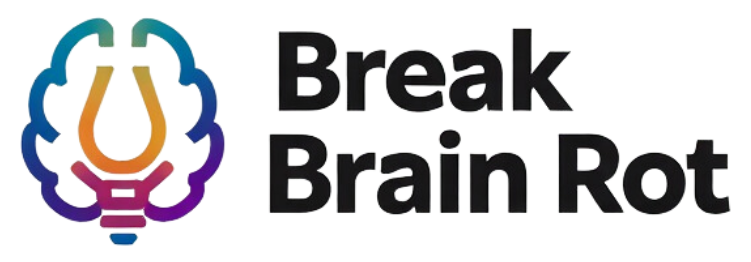Table of Contents
- What Is the Dopamine Hit from Doomscrolling?
- How Doomscrolling Affects the Brain’s Reward System
- 7 Ways the Dopamine Hit from Doomscrolling Harms Your Brain
- How to Recognize If You’re Doomscrolling Too Much
- Healthier Alternatives to Combat Doomscrolling and Dopamine Dependence
- FAQs
- Conclusion
What Is the Dopamine Hit from Doomscrolling?
Doomscrolling refers to the compulsion to endlessly scroll through negative or distressing information online. Even when it worsens your mood, you may feel unable to stop. This cycle is fueled by dopamine, a neurotransmitter linked to motivation, anticipation, and the brain’s reward circuit.
Definition of Doomscrolling
Doomscrolling isn’t simply reading the news. It’s an unconscious search for more information, often focused on crises, conflict, or disasters. Each new update promises a sense of control but usually delivers more anxiety.
Dopamine and the Brain’s Reward Circuit
Dopamine isn’t about pleasure alone—it’s about the desire to seek. Your brain rewards you with small dopamine bursts every time you see something new, which reinforces the habit. As Harvard Health explains, this system motivates behavior, even when the outcome is harmful.
Why Negative Content Triggers Curiosity
Humans are wired to pay attention to threats for survival. Bad news sparks a form of hypervigilance, making doomscrolling feel like a way of protecting yourself. Unfortunately, prolonged exposure backfires, feeding stress instead of safety.
How Doomscrolling Affects the Brain’s Reward System
Continuous Stimulation of Dopamine Receptors
The brain perceives each new headline as a reward trigger. Over time, you need more scrolling and more negative updates to feel ‘satisfied,’ a pattern that resembles other compulsive habits.
The Illusion of Control via Information
When you consume distressing stories, your brain may mistake it for gaining control. You feel “in the loop,” but in reality, your mental state suffers without bringing actual solutions.
Brain Fatigue and Overstimulation
Constant exposure to bad news taxes your mental energy. The overload of negativity leads to cognitive fatigue, reducing clarity and focus. This mirrors the effects of screen time on brain health found in digital research.

7 Ways the Dopamine Hit from Doomscrolling Harms Your Brain
1. Increased Anxiety and Stress
The endless feed keeps your body in a fight-or-flight state, raising cortisol levels and amplifying feelings of worry, uncertainty, and dread. Over time, this erodes your mental resilience.
2. Disrupted Sleep Patterns
Late-night doomscrolling combines two dangers: blue light that suppresses melatonin and mental overstimulation that delays rest. This creates sleep disruptions that impair memory and mood.
3. Shortened Attention Span
Constant consumption of bite-sized negative updates fragments your focus. Just as social media has been shown to reduce concentration, doomscrolling makes it harder to sustain deep thinking.
4. Emotional Desensitization
Consuming a steady stream of negative content can numb emotional responses. You may find yourself less empathetic toward others and more detached from impactful news.
5. Reinforced Negative Thinking
Dopamine reinforces the cycle, training your brain to anticipate more negativity. This can feed pessimism and even contribute to depression (see our guide on depression and digital habits).
6. Impaired Memory Function
With so much mental bandwidth consumed by stress-triggering material, your short-term memory can weaken. Important positive experiences are easily overshadowed by bad news loops.
7. Risk of Digital Addiction
The dopamine-doomscrolling loop resembles behavioral addictions. Research by the American Psychological Association highlights how digital dependence can mimic addictive patterns similar to gambling.
How to Recognize If You’re Doomscrolling Too Much
Warning Signs
Notice if you lose track of time scrolling, neglect important tasks, or feel more drained after consuming media than before.
Psychological Indicators
Feeling restless without your phone, heightened worry, or constantly refreshing news feeds are all signs you may be doomscrolling excessively.
Self-Assessment Questions
- Do you scroll news right before bed despite better intentions?
- Do you feel worse after reading updates?
- Are you checking for updates multiple times an hour?
Healthier Alternatives to Combat Doomscrolling and Dopamine Dependence
Digital Detox Strategies
Set intentional limits—like no devices an hour before bed—or use apps that lock your social media after certain time thresholds.
Mindful Media Consumption
Balance negative news with neutral or uplifting sources. Instead of endless feeds, opt for curated newsletters that summarize key points.
Replacing the Dopamine Loop
Engage in activities that naturally boost dopamine: exercising, journaling, or practicing mindfulness. Learn more about the benefits of mindfulness and how they can counter digital overstimulation.
Frequently Asked Questions
Why does the dopamine hit from doomscrolling feel addictive?
Because dopamine fuels the anticipation of information, not just the reward, endless scrolling keeps you chasing the next headline.
Can doomscrolling affect long-term brain health?
Yes, chronic exposure to digital negativity can rewire your reward circuits, blunt focus, and increase your risk of anxiety or depression.
What are simple daily steps to reduce doomscrolling without missing important news?
Set scheduled check-in times for updates, choose trusted media sources, and avoid late-night scrolling sessions.
Does doomscrolling only affect anxious people?
No, anyone can fall victim to the dopamine cycle, though people prone to worry may be more at risk of spiraling into excessive habits.
Is doomscrolling worse than general social media use?
It can be, because negative news often triggers stronger emotional stress responses compared to casual entertainment content.
Conclusion
The dopamine hit from doomscrolling may trick you into believing that consuming more news equals control, but the opposite is true. The cycle between doomscrolling and dopamine reinforces negativity, taxes your mental health, and can lead to addictive patterns. The good news? You can take charge. By recognizing the warning signs, setting boundaries, and replacing destructive habits with mindful alternatives, you reclaim focus, reduce stress, and restore balance. Instead of letting your phone dictate your mental state, use awareness to regain control over your digital world. Start small, choose healthier sources of information, and remind yourself that your attention is your most valuable resource—so protect it.

